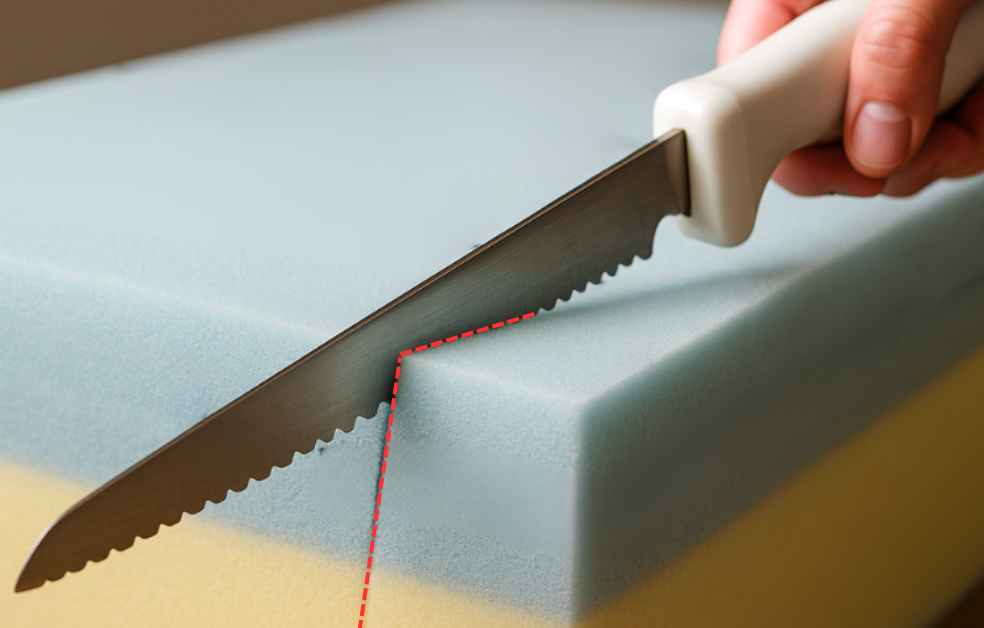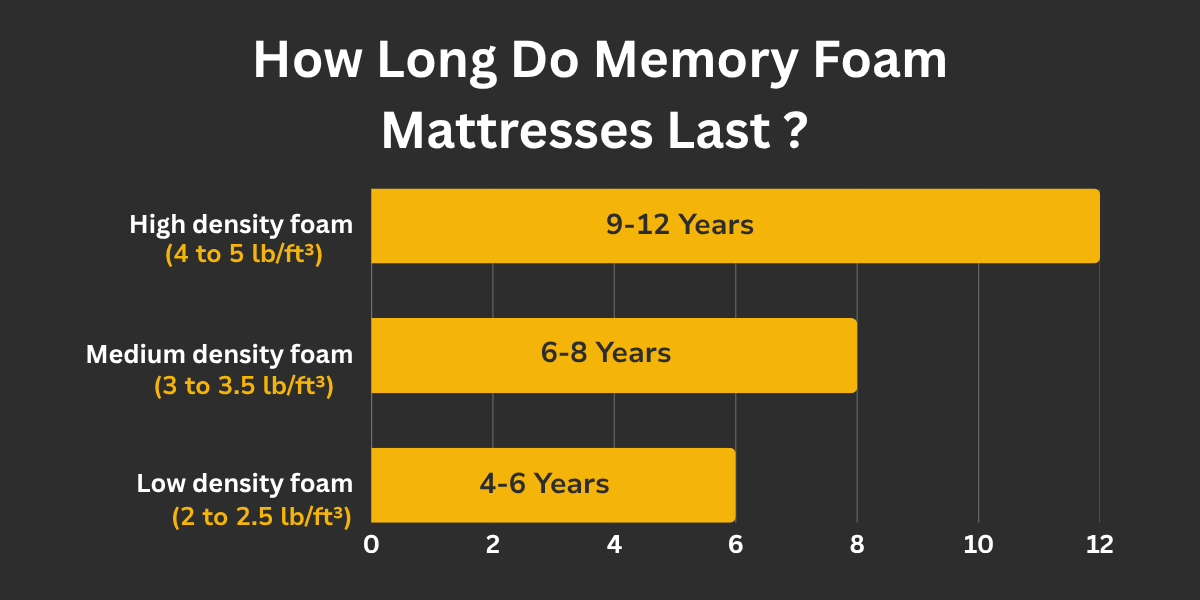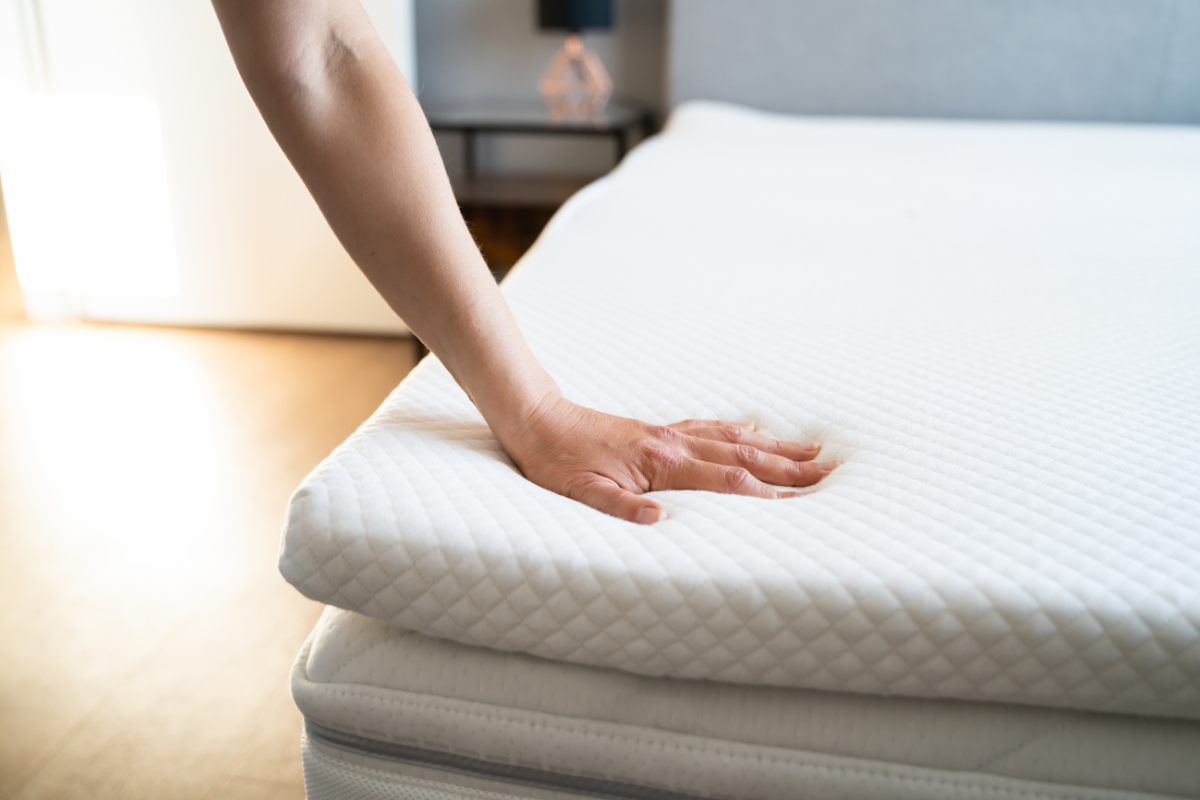Let me guess, you spilled something, noticed a weird smell, or just realized it’s been way too long since you cleaned up your mattress.
Don’t worry, you’re not alone.
Most people forget that memory foam, even though super comfy, is like a sponge that absorbs more than just your dreams.
The good news? You don’t need fancy tools or harsh chemicals to keep it clean.
Whether it’s routine maintenance, a pet accident, or just freshening up, this guide has you covered with safe, simple, and effective ways to clean your memory foam mattress without damaging it.
“A 2002 study found dust mite allergens in 40.5% of foam mattresses without covers, compared to just 12.5% in spring mattresses.”
What Do You Need to Clean a Memory Foam Mattress?
Cleaning your memory foam mattress doesn’t require fancy magic tools, but you do need the right supplies to avoid damaging the foam.
Here’s what we recommend:
- Vacuum with upholstery attachment: For removing dust, hair, & debris from the surface.
- Mild dish soap or enzyme cleaner: Useful for treating stains without ruining the foam.
- Spray bottle: To apply your cleaning solution evenly.
- White vinegar: A natural deodorizer and disinfectant.
- Baking soda: Great for soaking up moisture and neutralizing odors.
- Clean towels or microfiber cloths: For blotting and drying.
- Fan or hairdryer on cool setting: To speed up the drying process safely.
Avoid harsh chemicals or too much water. That’s where most folks go wrong. Just gentle cleaners, patience, and a little airflow go a long way.
Step-by-Step Guide to Clean Your Memory Foam Mattress
Follow these simple steps to safely clean your memory foam mattress without damaging it.
- Strip the Bed

- Take off all sheets, pillowcases, and mattress protectors.
- Wash them separately to remove dust, body oils & allergens.
- Vacuum the Surface
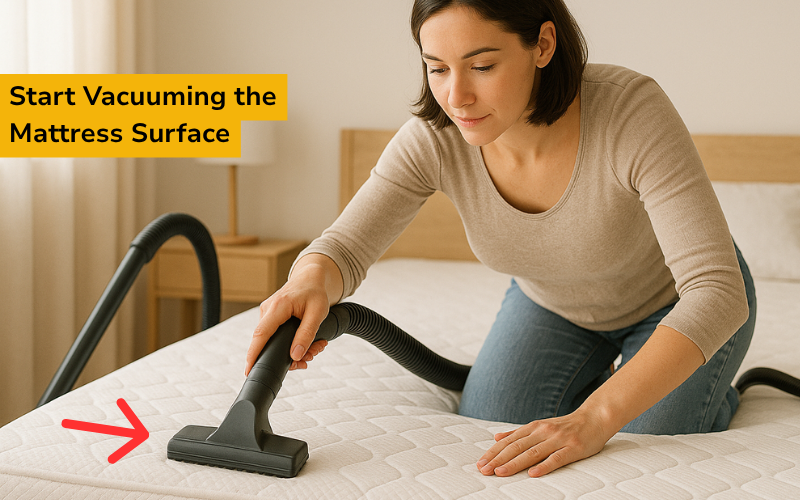
- Prefer a vacuum cleaner with an upholstery attachment.
- Focus on seams, corners, and any crevices where dust collects. This step removes surface debris & any allergens.
- Spot Clean Any Stains
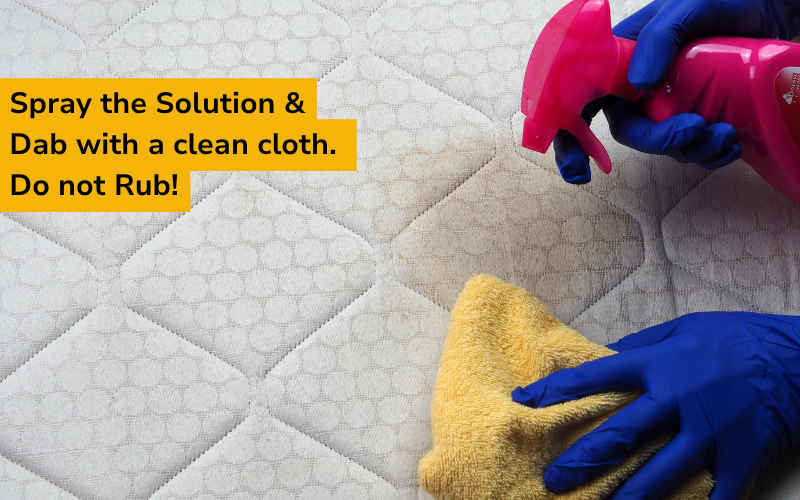
- Mix mild detergent with the warm water in spray bottle with one part of detergent and 5 parts of detergent.
- Spray the cleaner on the stain just enough to dampen it, not soak it. Let it sit for a few minutes to loosen the stain.
- Gently press the stained area with a clean cloth to remove the detergent and stain. If you are rubbing it, Stop!
- For urine or sweat stains, try enzyme cleaner or a 50-50 mix of white vinegar and water.
- Blot until the stain lightens. Repeat if needed.
- Blot again with another cloth dipped in clean water to rinse. Finish by pressing a dry towel on the spot to soak up the extra moisture.
- Neutralize Odors with Baking Soda
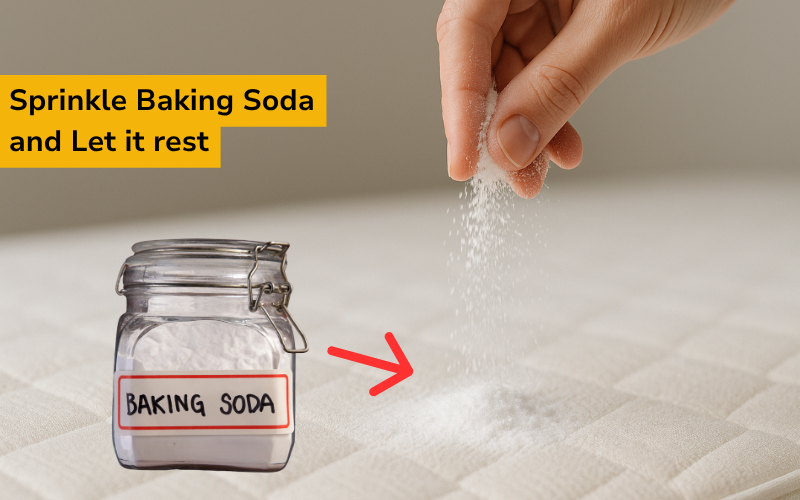
- Sprinkle baking soda generously over the mattress.
- Let it sit for at least 8 hours to neutralize the odors, however, overnight is ideal. Give it the time. Something like 15 minutes won’t suffice.
- Vacuum it up thoroughly again.
- Let it Dry Completely
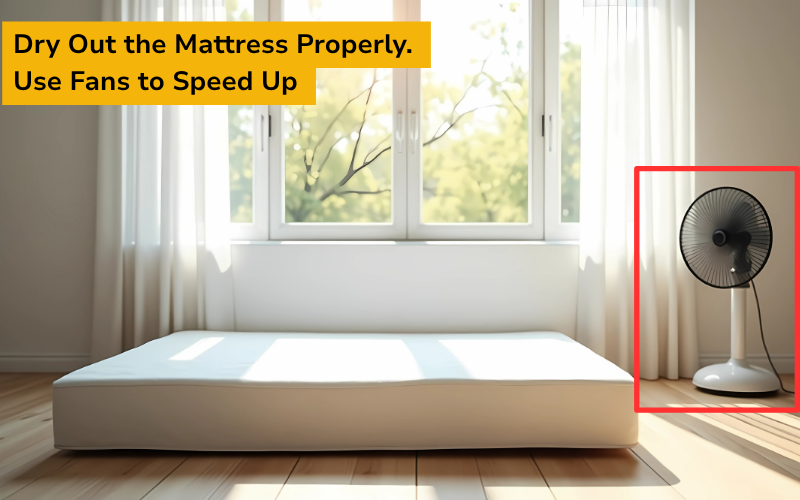
- Allow the mattress to air out in a ventilated room.
- Use a fan to speed things up. Avoid heat or sunlight for extended periods.
Proper drying is key. Moisture trapped inside can lead to mold, which ruins memory foam. Be patient and let it fully dry before putting the bedding back on.
Common Mistakes to Avoid
Memory foam might seem durable, but it’s more delicate than it looks.
I’ve learned the hard way that certain cleaning habits can seriously mess it up.
- Don’t soak it. Water can seep deep inside and lead to mold or weaken the foam.
- Avoid strong cleaners. Bleach or Ammonia based products can break down the foam’s structure and shorten its lifespan.
- No scrubbing. Scrubbing may seem like a good idea, but it can easily tear the surface or ruin the texture.
- Be cautious with steam. Steam cleaners push moisture deep into the foam. Unless the manufacturer gives it a thumbs-up, skip it.
Stick with spot cleaning and air drying. It’s a slow process, but keeping it simple is what actually preserves the mattress long-term. When in doubt, gentle and minimal always wins.
How Often Should You Clean Your Memory Foam Mattress?
“According to WebMD, the average person can sweat up to 26 gallons a year in bed -moisture that memory foam easily absorbs if not cleaned regularly.”
To keep your mattress fresh and in good shape, stick to a simple routine:
- Vacuum every 2 to 4 weeks to remove surface dust and debris.
- Deep clean and deodorize it every 3 to 6 months depending on use, allergies, or if you sleep with pets.
- Spot Clean the stains immediately as soon as you notice them. Don’t wait too long or they’ll set.
Regular upkeep prevents odors, extends the mattress lifespan, and helps you sleep cleaner and healthier.
Tips to Prevent Future Stains and Smells

Once you’ve done the deep cleaning, it’s all about maintenance. A few small habits can go a long way in keeping things fresh.
Limit Liquid Intake before bed. Avoid too much liquid, especially caffeine, an hour before sleep.
Bathroom before bed. Make it a routine for kids to go before sleep. You can also try waking them up once during the night for a visit.
Let pets out regularly. Take pets outside often so they don’t urinate indoors at night.
- Always use a waterproof mattress protector. It will act as a barrier against spills, sweat, and dust mites.
- Rotate the mattress every six months. This helps it wear evenly and prevents permanent body impressions.
- Skip food and drinks in bed. Crumbs, spills, and stains are just waiting to happen. Trust me, even that cup of tea can backfire.
- Let it breathe. Every few months, strip the bedding & let the mattress air out for a few hours.
These steps take just a little effort but make a huge difference in how clean your mattress stays and how long it lasts.
I have now followed this routine for years, and my memory foam mattress still feels fresh without that musty smell or weird yellow stains.
Why does my Memory Foam Mattress gets Dirty so Often?
Even if you use a sheet or protector, memory foam mattresses trap more than you think.
Sweat, dead skin, body oils, and dust mites build up slowly over time, especially if you’re not rotating or airing it out often.
Of course, there are also accidents.
Urine, blood, or coffee spills can all cause unsightly stains on your memory foam mattress. If you snack in bed or have pets, crumbs and dander just adds to the mess.
Final Thoughts
Your memory foam mattress isn’t just another piece of furniture. It’s where you rest and recover every night.
Taking care of it keeps it clean, comfortable, and helps it last longer. But even with the regular maintenance, no mattress can last forever.
If it starts to sag, feel lumpy, or you wake up sore, it might be time for a replacement. Good care helps, but knowing when to let it go is just as important.

